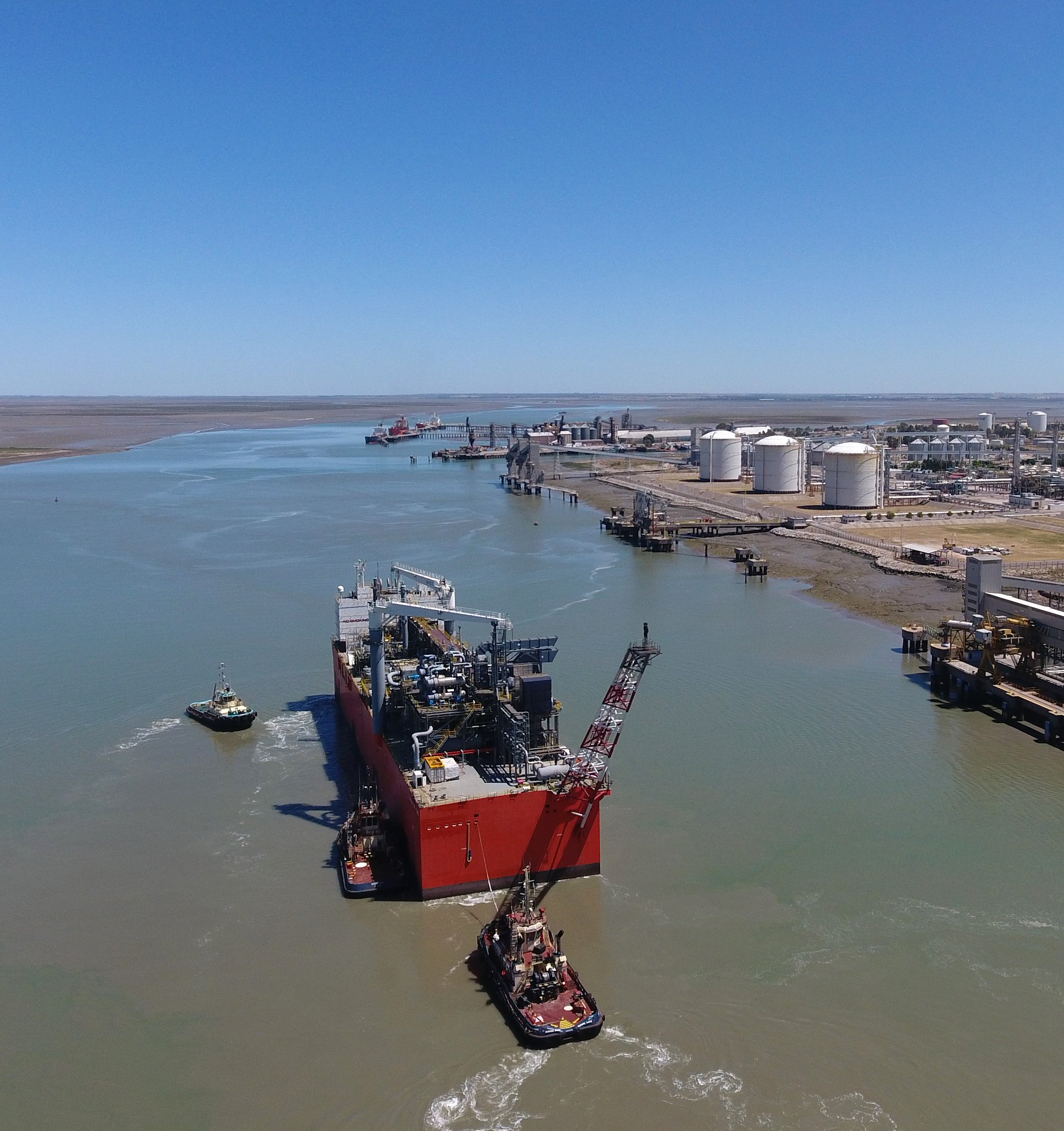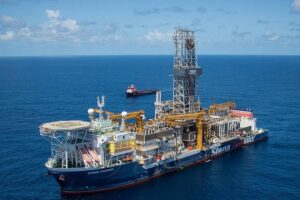
(Natural Gas Intelligence, 26.Apr.2021) — Argentina has commissioned a second floating storage and regasification unit (FSRU) to meet higher-than-expected natural gas demand this upcoming winter in the Southern Hemisphere.
The country’s natural gas buyer, Integración Energética Argentina (Ieasa), has leased an Excelerate Energy LP FSRU for the Bahía Blanca port. This will add to the existing FSRU now stationed at Escobar, also in Buenos Aires province.
The FSRU will dock at Bahía Blanca on May 26 for a period of 98 days, according to state news agency Télam.
Last week, Ieasa launched a tender for 13 liquefied natural gas (LNG) shipments into the port, which will add to the 24 contracted in March for Escobar. Last winter, Ieasa purchased a total of 28 LNG winter cargoes to meet demand. The country also brings in gas from Bolivia via pipeline.
Home to the massive Vaca Muerta shale deposit in Neuquén province, Argentina has struggled to boost natural gas production even as oil and gas activity ramps up. Now it faces the additional challenge of a winter of higher demand, along with a health worker’s strike in Neuquén that is impacting workflow.
This Argentine winter, which runs roughly from May through September, “there will be a combined effect of greater economic activity than last year leading to higher gas demand, and then you will have some natural decline from conventional upstream assets,” Wood Mackenzie principal Igancio Rooney told NGI from Buenos Aires. “Shale and Vaca Muerta will be able to cover some of that gap, but increased LNG will be needed to cover for some of that decline that will not be offset.”
As for the ongoing strike, “demonstrations by public employees in the health sector are cutting some transport routes in Neuquén, and part of this interferes with Vaca Muerta. What is mostly being impacted is the movement of supplies to the field and new crews coming in and out. The supply chain is impacted and production might be hit as input levels are decreased.”
Neuquén is the principal gas-producing region of the country, and is also the source for seasonal pipeline exports to neighboring Chile.
Despite the import scenario this winter, Excelerate South America vice president Gabriela Aguilar told local press her company was working with midstream firm Transportadora Gas del Sur (TGS) on an LNG export project.
“We keep working and have this initiative that we think is the most realistic way that Argentina can grow and export natural gas, and that doesn’t invalidate Argentina importing LNG to cover winter demand peaks which are spot and short term,” she said.
Rooney also thinks that the country’s efforts to boost natural gas through its Plan Gas 4 production scheme will prove fruitful, leading eventually to LNG exports.
“The numbers in January and February compared to last year show that production is a bit down. But the expectation is that drilling and new wells will be put into production quickly,” he said.
Natural gas production in Argentina during the first two months of the year fell by 11.1% compared to the same period last year, to 115 million cubic meters/day, or 4.06 Bcf/d, according to the Energy Secretariat.
“The gas market is better off than before Plan Gas,” Rooney said. “The discussion now is how do you provide the levers for the domestic market? Given the potential size of the market, Argentina will be able to be part of the world of LNG exports. LNG should be the growth driver. The size of the resource is significantly higher than domestic demand.” But, he added, “the sooner the better.”
____________________

